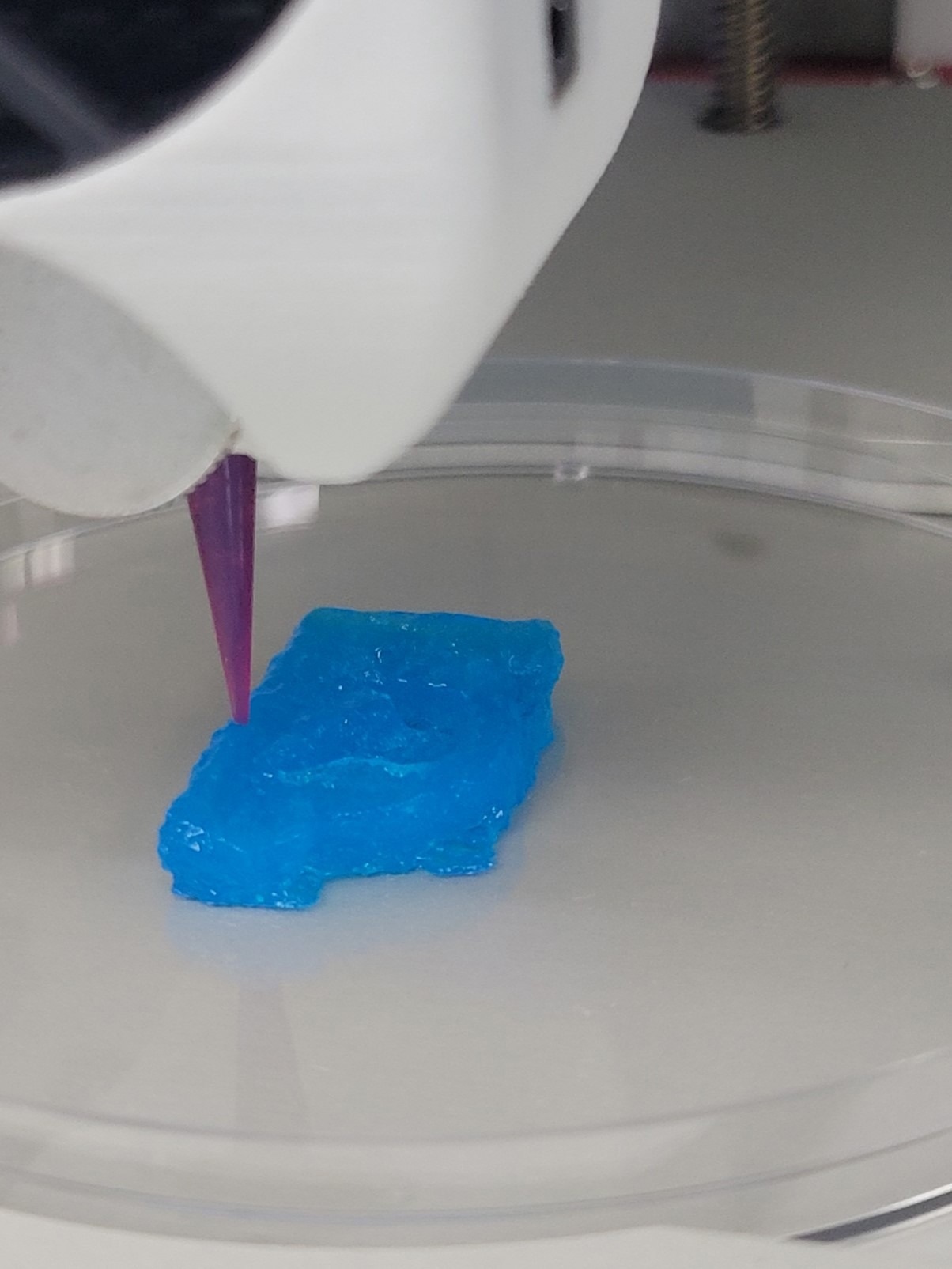TissueFab bioink (GelHA)ma-Vis/405 nm, low endotoxin bioink is a 3D bioprinting bioink based on hyaluronic acid methacrylate and GelMA. Lithium phenyl-2,4,6-trimethylbenzoylphosphinate (LAP) is a cytocompatible, water-soluble Type I photoinitiator used to polymerize hydrogels and other polymeric materials. Due to its enhanced water solubility, higher polymerization rates with 365 nm light, and absorbance at 400 nm, this photoinitator is recommended over Irgacure 2959 for biological applications.
GelMA is a polymerizable hydrogel material generated from natural extracellular matrix (ECM) components. Gelatin has become popular for tissue engineering applications due to its inexpensive cost, availability, and preservation of natural cell binding motifs. In the extracellular matrix, hyaluronic acid (HA) is a linear polysaccharide composed of alternating D-glucuronic acid and N-acetyl-D-glucosamine. Covalently crosslinked hydrogels are routinely formed by chemically modifying HA.

Image Credit: Merck
Properties
Source: Merck
| . |
. |
| Quality Level |
100 |
| Application(s) |
3D bioprinting |
| Storage temp. |
2-8 °C |
Application
The formulation has been refined for 3D bioprinting of tissues and constructs utilizing extrusion-based 3D bioprinters, and it can also be used to bioprint cell-laden hydrogels in any desired shape without the usage of any supporting material. Crosslinking printed objects with visible light can be done in a single step for additional cell culture and maturation for tissue engineering and regenerative medicine applications.
Endotoxins have been shown to have a negative influence on cellular proliferation, shape, differentiation, inflammation, and protein expression. The number of contaminated organisms identified in a given volume of material is referred to as the bioburden. To avoid undesired interactions, each batch is screened for endotoxins as well as total bioburden (aerobic and fungal).